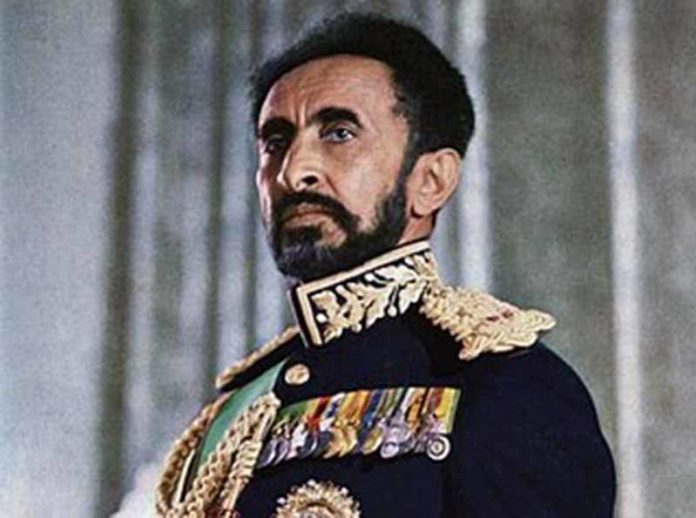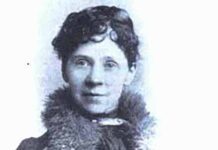As prince, king and finally emperor he brought his country out of the middle ages and into the 20th Century.
He was born Prince Tafari Makonnen on July 17, 1891, in Harar, the son of Prince Makonnen Woldemikael Gudessa and Lady Yeshimebet Ali Abajifar. The Prince was privately educated through the French mission at Harar. He was married in July of 1912 to Princess Menen and in 1916 his first son was born.
Tafari, Prince of Princes
The year 1916 also marked the beginning of his rise to power. The dissolute emperor, Lej Yasu was deposed and his daughter Zauditu was proclaimed empress. Tafari took advantage of the situation and had himself appointed regent, heir to the throne and, adopted the first of what would become a succession of lofty titles, Prince of Princes.
The Empress was a modern woman and she began taking steps, possibly at Tafari’s direction, to have Ethiopia installed as a member of the League of Nations in 1923. Tafari now took steps to consolidate his position and began a tour of European capitals in 1924 to make himself known and gain support from various heads of state. In November 1928 he arranged to have himself crowned king. This gave him authority independent of the empress and when she died in 1930 his succession was smoothly accomplished,
Emperor Haile Selassie
Tafari was proclaimed Emperor of Ethiopia on April 3, 1930. He adopted the grandiose titles of “Conquering Lion of the Tribe of Judah”, “King of Kings” and changed his name to “Might of the Trinity” or Haile Selassie.
The new emperor lost little time in making reforms. Ethiopia had long been an almost medieval country and Haile Selassie was determined to bring his empire into the twentieth century. Within a year of his assuming power he had granted his people a limited constitution that established a court system and a parliament.
War with Italy
The Emperor soon discovered, however, that moving in European circles also brought certain troubles. Conflicts with Italy dated back to the last century when Italian troops had invaded Ethiopia and suffered humilitating defeat at the hands of the Ethiopians. In December, 1934, Italian and Ethiopian soldiers clashed briefly at Wal-Wal on the border of Italian Somaliland. This was the pretext Italian dictator Benito Mussolini needed for war.
Haile Selassie ordered his army to mobilize on September 29, 1935. Ill equipped to fight a modern war the Ethiopians were no match for the Italians. Within a few months the invaders were threatening the capital of Addis Ababa. Haile Selassie left the country in May, 1936 and his capital surrendered soon afterwards. The Emperor appealed in vain to the League of Nations to halt the conquest and subsequent occupation.
World War II
Haile Selasisie fled to exile in England and began planning his return to power. By 1941 the British had begun the work of raising rebellion against the occupying Italians in Ethiopia with a small force of Sudanese soldiers and British officers forming the core. Their successes led to patriotic Ethiopians coming to their aid in increasing numbers and on January 30 Haile Selassie was back in his kingdom. British and Commonwealth troops soon entered Ethiopia from Sudan and Kenya, sweeping the Italians before them and liberating Addis Ababa on April 8. Haile Selassie returned to his capital in early May.
His first acts, supported with British financial aid, were to restore his war ravaged country. In 1942 he instituted major land reforms, abolished slavery, began the rebuilding of Addis Ababa as a modern capital and reorganized the armed forces and government.
Ethiopian Coups
In an attempt to dispel the discontent Haile Selassie increased his governments efforts towards social reform and economic development. It was not enough and an aborted coup was staged by members of the Imperial Guard in an attempt to overthrow Haile Selassie in December 1960.
Still government corruption, unemployment, rampant inflation and the inequality of wealth distribution were largely ignored. For six months in 1974 the country was rocked by a series of strikes and demonstrations by soldiers, workers and students. Major Mengistu Haile Mariam led the armed forces in a coup on September 12 that ended with the deposition of Haile Selassle.
The Provisional Military Administrative Council, took control of the country and established a state-controlled socialist economy. By 1975 all land had been nationalized and in March the monarchy was abolished and a republic established.
The ex-emperor did not long survive his monarchy. He died in Addis Ababa in August 1975, less than a year after being deposed.
Sources:
- Anthony Mockler – Haile Selassie’s War – 2003
- Andrew Dunlop Roberts – The Cambridge History of Africa – 1986
- Paul B. Henze – Layers of Time: A History of Ethiopia – 2000








